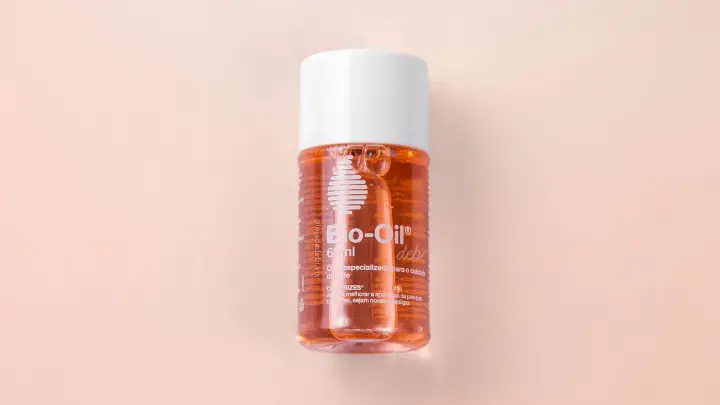Hyaluronic acid paired with retinol is a magic pair to treat skin concerns like fine lines, wrinkles, and dehydrated and inflamed skin. Skincare products that incorporate these actives in their formulas have proven very effective and received a lot of commendation.
Hyaluronic acid is the skin’s miracle hydrator while retinol is the ingredient behind every anti-aging skincare product. Combined, these products work wonders for every skin type.
If you have concerns about the common drying effect of using retinol, you need to read on. Hyaluronic acid soothes and protects your skin from possible irritations.
What Does Hyaluronic Acid Do for Your Skin?
Hyaluronic is a natural skin acid but your skin also naturally depends on an external supply of hyaluronic acid. This is because aging and too frequent exposure to the elements depletes the hyaluronic acid in your skin.
Hyaluronic acid is a natural humectant that attracts water molecules from the atmosphere. Then, it binds its weight to the water molecules and traps them in your skin, giving you hydrated and moisturized skin.
When it comes to a moisture boost for every skin type, you can trust this carbohydrate. This humectant property fortifies your skin and gives it resilience against environmental pollutants.
While keeping moisture in, hyaluronic acid firms your skin barrier against irritants that can cause skin problems.
Dr. Van Dyke, a board-certified dermatologist says, “hyaluronic acid can transfer water from your environment to the outer layer of your skin, reducing and improving the appearance of dry, scaly skin”.
Hyaluronic acid is safe for every skin type. If you are a sensitive skin type, this is not an ingredient to be picky or wary of. You’ll find this skin acid soothing and hydrating, relieving you of inflammations and sudden skin flares.
What Does Retinol Do for Your Skin?
Retinol is an anti-aging wonder ingredient. Moreover, retinol penetrates deep into your skin and helps with acne breakouts and scars.
This vitamin A derivative is not much of an exfoliant, but it communicates the need for skin resurfacing and renewal to your skin cells. Retinol fills fine lines and facial wrinkles, smoothening them and improving the appearance of mature skin.
Furthermore, it stimulates the synthesis of collagen and elastin, the proteins responsible for skin elasticity and resilience. Retinol also inhibits the activity of biological enzymes that break down collagen molecules.
Consequently, it increases cell turnover and gives you a brighter, even-toned complexion.
Can You Use Hyaluronic Acid With Retinol?
Hyaluronic acid and retinol work together to address your skin concerns. Also, each enhances the activities of the other. Using products that contain both ingredients is certainly not a bad idea for your skin type and its possible problems.
As I mentioned earlier, retinol has a common drying effect on the skin that can lead to irritations. The topical application of hyaluronic acid, the hydrator, will soothe your skin and reduce irritations.
During the period when your skin is adapting to retinol, hyaluronic acid makes it bearable, protecting your skin from damage.
Moreover, hyaluronic acid enhances the effect of retinol and keeps the ingredient trapped. The irritation caused by retinol affects your natural barrier and can damage it. Layering both actives, attracts moisture to your skin, hydrates, and strengthens your natural barrier.
Another reason why you can use them effectively is that both ingredients function within the same pH range. Hyaluronic acid optimally functions between the range of 5.0-8.0 and retinol is also active within the range of 5.0-7.0.
At these values, neither of them alters the pH of your skin and renders the other inactive. Also, they make a good pair to address so many skin concerns like acne and premature aging.
Can You Use Hyaluronic Acid With Retinol for Acne?
Yes, you can. Hyaluronic acid and retinol work together to improve acne and fade its scars. Neither of the two ingredients is completely an exfoliant. However, they have special abilities to carry out functions that are essential for oily and acne-prone skin.
Hyaluronic acid uses its humectant properties to soothe acne-prone skin and calm inflammation. Its moisture retention ability helps to keep your skin properly hydrated. This prevents oily skin from overproducing sebum, a major cause of acne.
Moreover, it keeps dry, acne-prone skin from getting too dry and irritated with resulting acne breakouts.
Retinol is a vitamin that can penetrate your pores, unclog them and regulate sebum production. By doing this, just like hyaluronic acid, keeps your skin from producing excess oil which leads to acne breakouts.
These functions put together can help prevent, reduce and treat acne breakouts. Additionally, these active ingredients make a perfect team to heal wounds, accelerate cell renewal and fade acne scars.
Consequently, a moisture boost synergizes with collagen synthesis and cell renewal to improve the appearance of your complexion and even your skin tone.
Can You Use Hyaluronic Acid With Retinol for Wrinkles?
Premature aging is sometimes a result of constantly dehydrated skin, this is where hyaluronic acid comes in. Another cause is the irregular breakdown of collagen and elastin, and this is why retinol is very important in skincare.
These factors lead to the formation of fine lines and facial wrinkles. Hyaluronic acid fills in the lines and wrinkles, plumps your skin, and restores youthfulness.
On the other hand, retinol stimulates the production of collagen and elastin. It enhances cell turnover and renewal which reveals better, hydrated, glowing youthful skin.
When you layer hyaluronic acid and retinol, you open your skin to receive the goodness of each. Hyaluronic acid plumps your skin and creates better skin for retinol to carry out its anti-aging functions.
In addition, with these active ingredients in your routine, your skin remains moisturized and supple with sufficient collagen levels. This prevents the formation of facial wrinkles.
How to Layer Hyaluronic Acid With Retinol
How you layer hyaluronic acid with retinol matters a lot. A board-certified dermatologist, Cynthia Bailey, MD, explains it this way, “layering your skin products in the right order helps you get the most out of your routine. It enhances the absorption of important active ingredients into deep layers of your skin”.
You do not want to apply one product that ends up interfering with the absorption of another. When it comes to layering these ingredients, retinol comes first. Retinol can over-dry your skin. Hyaluronic acid brings balance and makes both actives more effective.
Therefore, after applying retinol cream, hold on for about 30 to 45 minutes, allow your skin to breathe, and absorb the retinol properly. Thereafter, apply hyaluronic acid to replenish moisture and soothe your skin against the likely irritation caused by retinol.
When you apply retinol cream, start with small concentrations and focus on the areas you are looking to treat. For instance, skin areas with acne, fine lines, or facial wrinkles.
Follow up those areas with hyaluronic acid too. These skin conditions get better with sufficient moisture. Most importantly, apply sunscreen that has a broad spectrum to shield your skin from the photosensitivity of retinol.
How to Incorporate Hyaluronic Acid and Retinol In Your Routine
There are different ways you can include hyaluronic acid and retinol in your skincare routine to address your skin concerns. These active ingredients are major ingredients in skincare products like serums, moisturizers, eye creams, face oils, and skin correctors.
Dermatologists, however, advise that regardless of the retinol-based product you want to use, it is best to introduce it in small concentrations. Gabrielle Richens, a skincare coach, says, “to avoid retinization, the adaptation process where your skin gets dry, red, and irritated by retinol, start slow.”
Additionally, retinol can make your skin photosensitive to UV rays. So, you can rather alternate these actives in your routine. Use a hyaluronic acid serum or moisturizer in your morning routine. Then, use a retinol serum or moisturizer during your evening routine.
Altogether, you can also leave layering both active ingredients to your evening routine. They work just as effectively during the night and a bonus to this application is that you’re not going to be in the sun. So, your skin is protected.
When you use these active ingredients, be careful of any other ingredients you use with them. While you are looking to achieve great results, you do not want to jam your skin with too many actives and worsen what you should be treating.
Hyaluronic acid pairs well with other ingredients but the same cannot be said about retinol. Pairing vitamin C, alpha- and beta- hydroxy acids (AHAs and BHAs), and benzoyl peroxide with retinol can be harmful to your skin.
Gabrielle further explains that using too many actives at a time will be overhauling your skin and can cause too many irritations.
Are There Any Side Effects?
Generally, pairing retinol with hyaluronic acid reduces the side effects of retinol on your skin. However, you may still experience the drying effect of retinol if you use too much at a time. Also, if you do not layer SPF over your skin, retinol may expose your skin to sun damage.
Hyaluronic acid on its own is safe but if you apply it over dry skin or use too much of the acid, it can draw moisture from your skin.
The side effects are avoidable if you use both ingredients properly.
FAQs
Should you apply hyaluronic acid before or after retinol?
Apply hyaluronic acid after retinol. The topical application of retinol makes your skin lose moisture and dry out. So, you may pre-treat your skin with hyaluronic acid to create a balance and prepare your skin for retinol (if you have sensitive skin).
After applying retinol cream, allow your skin to absorb retinol for at least 30 minutes. Thereafter, you can seal in moisture with hyaluronic acid.
Is hyaluronic acid better than retinol?
Hyaluronic acid and retinol are great actives, and you shouldn’t have to choose between them. Each enhances the effect of the other to treat acne and facial wrinkles.
While hyaluronic acid is best for hydrating your skin, retinol is more effective for sebum regulation, acne, and anti-aging treatment.
Nonetheless, you need both to address these concerns. You need hyaluronic acid to soothe your skin from getting irritated by retinol. And you need retinol to increase collagen production.
Can you use hyaluronic acid with retinol and vitamin C?
Yes, you can. However, not at the same time. If you’ll like to combine hyaluronic acid with retinol and vitamin C, it is recommended that you use them at alternate times.
Vitamin C and retinol do not make a good pair for your skin. Using both at a time can overdry your skin. Moreover, vitamin C is best for daytime use while retinol is best for night application.
Conclusion
Hyaluronic acid and retinol make a perfect pair to treat acne and wrinkles. However, the magic behind these ingredients is in their right application. How properly you layer them determines the result you get.
If you’re looking to create a special routine with just hyaluronic acid and retinol, you are taking the right steps to luminous, youthful skin. Think of hyaluronic acid as the balm to retinol. During retinization, hyaluronic acid eases the irritation that retinol causes.
Moreover, hyaluronic acid helps to enhance the effect of retinol on your skin. So, pairing hyaluronic acid with retinol may just be the mix and match pair your skin needs for a glowing, even, and vibrant complexion.
Thanks for reading.
Serum101 provides you with relevant articles that feature answers to your questions on mixing skincare ingredients.






